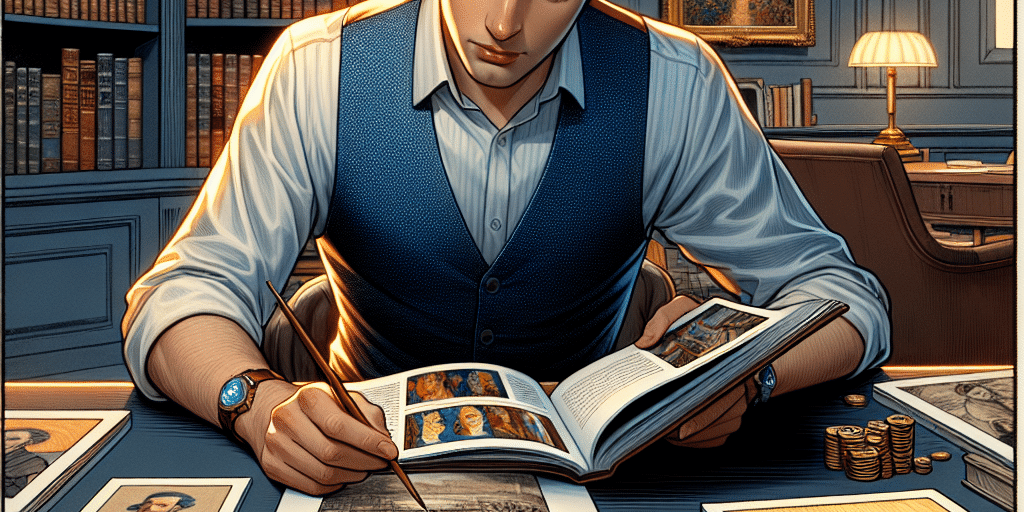Art Investment 101: Tips for the Aspiring Art Collector
In recent years, art investment has transitioned from a pastime reserved for the elite to an accessible and intriguing opportunity for a wider range of investors. Art can serve as a hedge against inflation, diversify your investment portfolio, and provide aesthetic pleasure. However, the art market can be complex and intimidating for newcomers. This article aims to offer foundational tips for aspiring art collectors who are contemplating art investment.
1. Educate Yourself: Knowledge is Power
Before diving into the art market, take the time to educate yourself. Familiarize yourself with art history, major art movements, and prominent artists. Visit galleries, attend art fairs and auctions, read art magazines, and follow art blogs. Understanding the context and significance of various works will sharpen your eye and help you make more informed decisions. Consider enrolling in courses or workshops that focus on art appraisal and investment.
2. Define Your Budget and Goals
Determine how much you are willing to invest and what you hope to gain. Are you looking to buy works for financial return, personal enjoyment, or a mix of both? Setting a clear budget and defining your goals can help guide your investment strategy and minimize financial risks.
3. Start Small and Build Gradually
You don’t have to start with a million-dollar masterpiece. Begin with emerging artists or lesser-known works from established artists. This approach allows you to build your collection gradually and gain confidence without committing significant capital upfront. Over time, as you learn more and refine your tastes, you can scale up your investments.
4. Consider Different Mediums and Forms
Art is not limited to paintings. Explore different mediums such as sculptures, photography, prints, and digital art. Each medium has its unique market dynamics, and diversification can offer various opportunities for investment and aesthetic enjoyment.
5. Purchase Authentic and High-Quality Works
Authenticity is paramount in art investment. Ensure that the artwork has proper documentation, including provenance and certificates of authenticity. High-quality materials and craftsmanship are also critical factors that can influence the artwork’s value over time. Consult with reputable dealers, galleries, and experts to verify the authenticity and quality of your potential acquisitions.
6. Understand the Art Market Dynamics
The art market operates differently from traditional financial markets. It is less liquid and more opaque, with prices often determined by subjective factors such as an artist’s reputation, historical significance, and current market trends. Stay informed about market dynamics through auction results, gallery exhibitions, and market reports.
7. Develop Relationships within the Art Community
Networking within the art world can provide valuable insights and opportunities. Build relationships with art dealers, gallery owners, curators, and fellow collectors. Attend openings and art events to stay connected and informed. Trusted advisors and experts can offer guidance and help you navigate the complexities of the market.
8. Be Patient and Long-Term Oriented
Art investment is typically a long-term endeavor. Unlike stocks or bonds, art does not generate income and may not appreciate quickly. Be prepared for holding periods that could extend over several years. Patience can yield significant rewards, both financially and aesthetically, as the value of your collection matures over time.
9. Consider the Costs and Logistics
Art investment involves costs beyond the purchase price. Consider expenses such as insurance, storage, transportation, and maintenance. Proper care and preservation of your artworks are essential to maintaining their value. Factor these costs into your overall investment strategy.
10. Seek Professional Advice
Consulting with art advisors, appraisers, and legal experts can be beneficial, especially when making significant acquisitions or selling valuable pieces. Professional advice can help you navigate legalities, taxes, and other complexities associated with art transactions.
Conclusion
Art investment can be a rewarding pursuit that combines financial potential with personal passion. By educating yourself, starting modestly, and seeking professional guidance, you can build a thoughtful and valuable art collection. Remember that the journey of art collecting is as much about personal enjoyment and cultural enrichment as it is about financial returns. Happy collecting!







